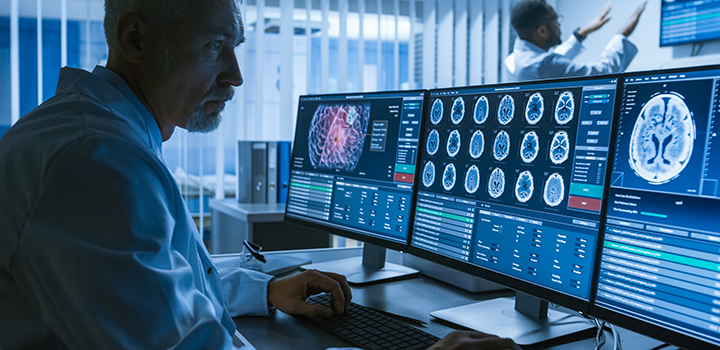Researchers identify brain command centre for tool use
By: News archive

New research shows for the first time the brain regions that determine how to correctly handle tools – a crucial development for managing some types of brain damage and dementia.
The findings from the University of East Anglia (UEA) could help better understand the problems with object use found in several neurological conditions associated with temporal lobe damage, such as some forms of dementia (e.g., semantic dementia).
In addition, it could help develop better devices or rehabilitation for people who have lost function in their limbs due to brain injury. It could even contribute to the creation of next generation neuroprosthetics, allowing people without limbs to control prosthetics with their minds.
The discovery could also provide insight into how the brain evolved to support the use of tools, a defining feature of the human species.
Lead researcher, Dr Stéphanie Rossit of UEA’s School of Psychology, said: “The research shows for the first time that brain regions in the anterior part of the temporal lobe (underneath the ears) represent how to correctly handle tools. While many neuroscientific theories had proposed this before, we are the first team to provide actual research data to support this.
“This brain region has been studied for more than a century as it is thought to store general knowledge and meaning about the world that surrounds us. Here we show that it stores important information for correctly interacting with real-world objects.”
The team used an MRI scanner to collect brain imaging data while 20 participants interacted with 3D objects. Using a special imaging technique called functional MRI (fMRI), they measured activity throughout the brain.
The participants manipulated a spoon, a knife and a pizza cutter, and were also given elongated shapes that did not represent tools and asked to grasp the objects by their handles.
Dr Rossit said: “Throughout all aspects of experimentation, the stimuli were purposefully referred to as ‘objects’ rather than tools. Since participants were not required to form intentions of using these tools, or even process their identities, our results demonstrate that tool representations are automatically triggered.
“Knowing not to grasp an object – like a knife, by its blade – is critical. By examining neuroimaging evidence, we can see the anterior temporal cortex represents conceptual information about tools, like the usual locations we should grasp them for use.”
The data, code and materials used in the project have been made openly available by the research team so that it is more transparent and can be re-used by other research teams around the world to advance the field.
The study was carried out by Dr Ethan Knights, who scanned the brain of volunteers at the Norfolk and Norwich University Hospital, and in collaboration with Dr Fraser W. Smith, also at UEA.
Dr Knights said: “Our work is a great example of how machine-learning can be applied to brain-imaging data for understanding how the brain works.”
The research was funded by BIAL Foundation and Drs Rossit and Smith have just secured a new grant from British Academy/Leverhulme Trust to investigate how different uses of hand-held tools are represented in the brain.
'The role of the anterior temporal cortex in action: evidence from fMRI multivariate searchlight analysis during real object grasping’, is published June 5, 2022 in Scientific Reports.
Related Articles

Fresh evidence of ChatGPTs political bias revealed by comprehensive new study
The artificial intelligence platform ChatGPT shows a significant and systemic left-wing bias, according to a new study by the University of East Anglia (UEA).
Read more
A values crisis underpins the biodiversity and climate emergency
A new study published in Nature shows how undervaluation of nature is foundational to the environmental crisis we face.
Read more
Study reveals the increasing cost of debt caused by climate change
Climate change will increase the cost of sovereign and corporate debt worldwide according to new research led by the University of East Anglia (UEA) and the University of Cambridge.
Read more